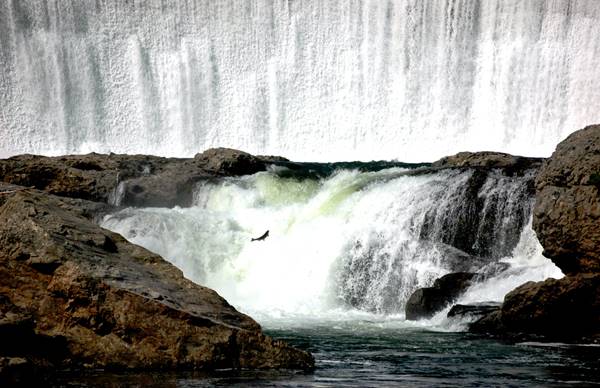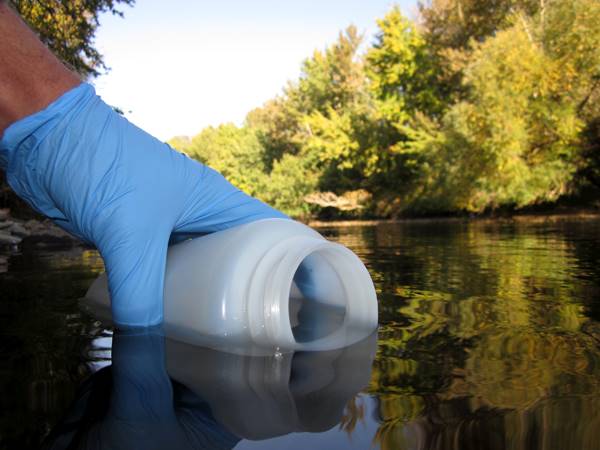USGS and Colville Tribes use eDNA sampling to monitor endangered Chinook salmon
The use of discarded genetic material as an indicator of a species’ presence has grown in popularity among scientists, resource managers and other monitoring professionals. The technology is relatively new, however, and its potential is still being realized. A recent U.S. Geological Survey study showed that eDNA can be used to monitor species that are otherwise hard to find, such as the endangered Chinook salmon in Washington’s Columbia River.
“This started as part of my master’s research several years back,” said USGS supervisory ecologist Matthew Laramie. “[The Colville Confederated Tribes] were planning a reintroduction of spring Chinook into the Okanogan Basin, and they were looking for ways to affordably monitor the impacts of that conservation effort.”
The Chinook reintroduction offered the USGS a perfect opportunity to work on eDNA monitoring techniques, so they partnered with the Colville Tribes to study the salmon in the Okanogan. Their findings were published in a special edition of Biological Conservation.
Sampling for the study occurred in 2012. A key advantage that eDNA monitoring offers, Laramie said, is its rapidity, particularly during the sampling process. While other methods, such as weir collection and electrofishing, can take hours per sampling site, collecting eDNA samples in the Okanogan only took about 20 minutes per site — just enough time to collect three liters of water and filter the samples in the field.
Some of the sampling took place in June, during Washington’s runoff period. High volumes of fast-moving white water coursed through the streams, and Laramie feared that any collected samples would be diluted past the point of usefulness. “I didn’t have high hopes,” he admitted. Back in the lab, however, eDNA would prove him wrong.

A Chinook salmon at Coyote Falls on the Similkameen River in Washington. (Credit: Brian Miller)
Most of the work involved in eDNA monitoring happens in the lab, Laramie said. It only takes a couple hours to extra genetic material from the water samples, but protocol dictates that the process is split up between two days. When that’s finished, the extracted DNA is placed in in a freezer to stabilize, before being processed in a qPCR machine that can detect whether it matches the genetic material of the targeted species.
While the USGS and Colville researchers were only testing for the presence or absence of Chinook DNA in their samples, Laramie said that early studies have indicated a possible correlation between species density and eDNA concentration.
“I think there’s a lot of variables going on that could make confirming that correlation kind of tricky,” he said. “But there’s a lot of development going on in this field and there may be a time when we can get a little bit finer resolution from the eDNA.”
A lot of development can mean working out a lot of kinks. The sampling and testing processes went well, showing that Chinook populations can be detected with eDNA even in highly turbid, voluminous waterbodies. But designing the tests to work as intended, without a slew of false positives, resulted in plenty of headaches for the researchers, Laramie said.
Today, the Colville Tribes continue to use the eDNA testing methods to monitor the impact of their Chinook reintroduction efforts. The affordability, reliability and efficiency of the method will likely grow as further research is conducted into eDNA, and Laramie expects that it’s only a matter of time before its use is ubiquitous.
“The takeaway is that eDNA analysis is a powerful new tool for resource managers, and I think we’re kind of on that cusp in the field where it’s transitioning from novel uses and novel approaches to more widespread use in fisheries management,” he said.
Of course, Laramie said, “there’s a lot of things that are still unknown about the method.”




0 comments